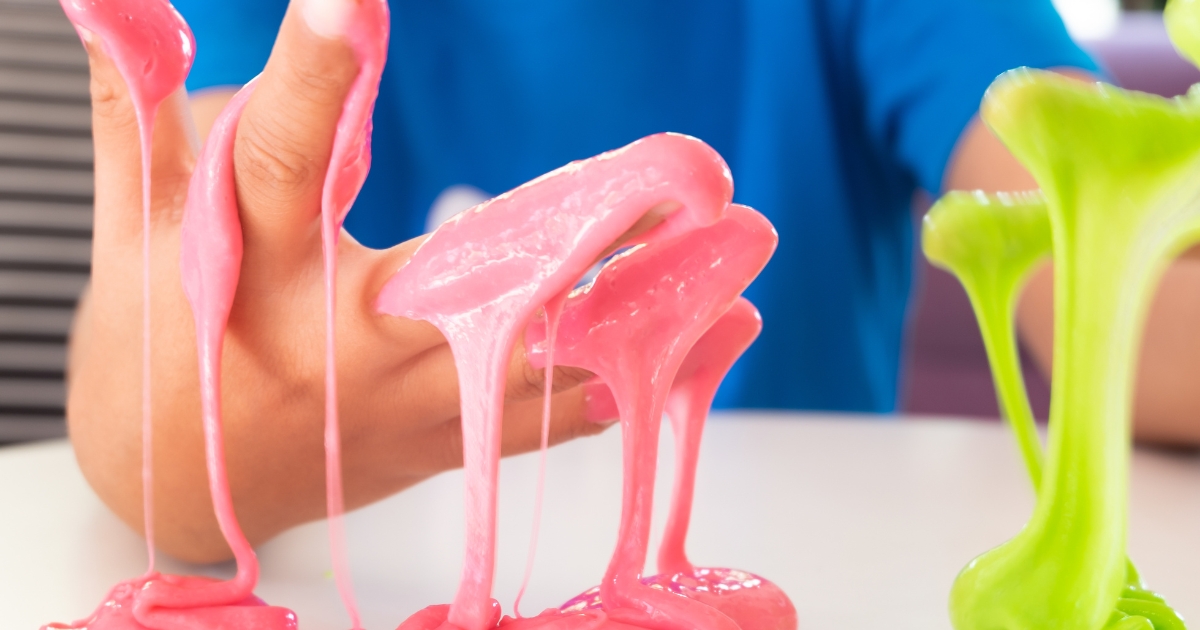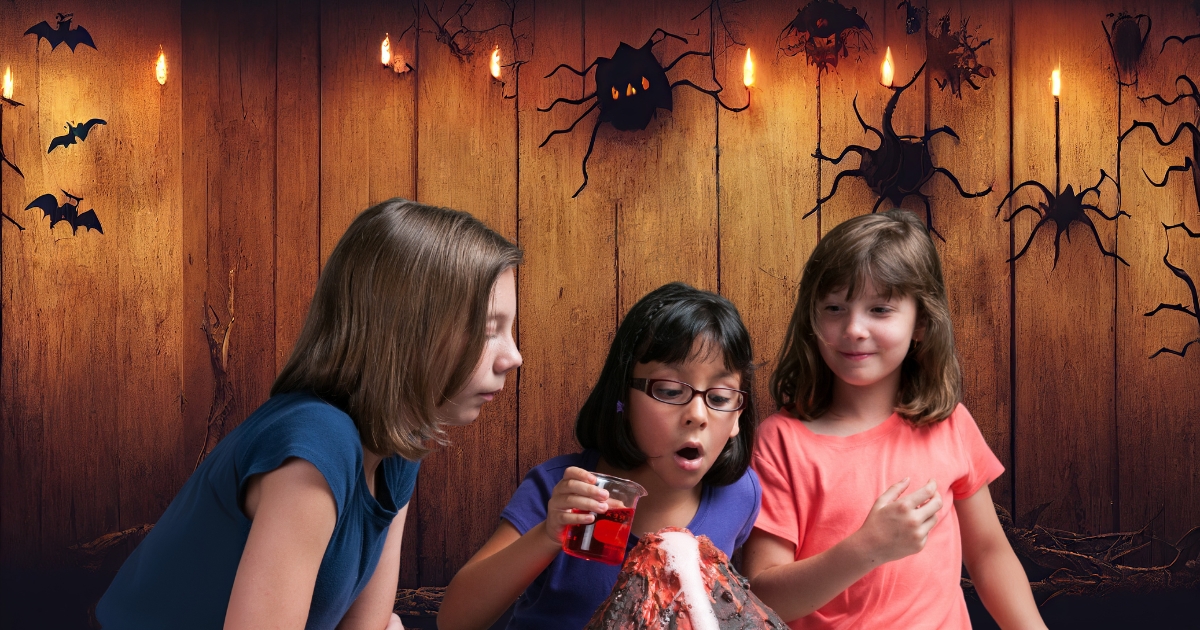Halloween presents a perfect opportunity to blend spooky fun with educational activities that capture your child’s imagination while teaching valuable scientific principles. These Halloween science experiments transform your homeschool environment into an exciting laboratory where learning becomes an adventure rather than a chore.
Elementary school children naturally gravitate toward hands-on activities, and Halloween-themed projects tap into their existing excitement about the holiday while introducing fundamental STEM concepts. These experiments use common household materials and simple scientific principles to create memorable learning experiences that stick with children long after the jack-o’-lanterns have been carved.
The beauty of Halloween science experiments lies in their ability to make abstract scientific concepts tangible and exciting. When children see a “volcano” erupt with orange lava or watch “ghost” bubbles float through the air, they’re witnessing chemical reactions, physics principles, and biological processes in action. These visual and tactile experiences create strong neural pathways that enhance retention and understanding.
Spooky Chemistry Experiments That Bubble And Fizz
Chemistry experiments offer some of the most dramatic and engaging Halloween science projects for elementary students. These reactions create visual spectacles that perfectly match the Halloween spirit while teaching fundamental chemical principles.
Witch’s Brew Volcano
Create an erupting volcano using baking soda, vinegar, and orange food coloring. Mix two tablespoons of baking soda with a few drops of dish soap in a tall container. Add orange and red food coloring to create a lava-like appearance. When you pour in half a cup of vinegar, the acid-base reaction produces carbon dioxide gas, creating impressive bubbling and foaming that mimics a volcanic eruption. This experiment teaches children about chemical reactions, gas production, and pH levels.
Ghostly Foam Explosion
The elephant toothpaste experiment becomes spookier with white coloring and creative presentation. Mix hydrogen peroxide (3% concentration for safety) with liquid dish soap and food coloring. Add a tablespoon of liquid catalase or yeast dissolved in warm water to trigger the decomposition reaction. The rapid breakdown of hydrogen peroxide creates a massive foam explosion that resembles ghostly ectoplasm. This demonstrates catalytic reactions and the decomposition of compounds.
Color-Changing Slime Laboratory
Create thermochromic slime that changes color with temperature using mood ring powder or thermochromic pigments. Mix white school glue with shaving cream, contact solution, and the color-changing additive. The slime appears one color at room temperature but transforms when handled, teaching children about temperature-sensitive materials and polymer chemistry. Different activation temperatures create various effects, from cold-activated blues and purples to warm-activated oranges and reds.
Bubbling Cauldron Experiment
Fill a large black pot with warm water and add dry ice (with proper adult supervision and safety equipment). The sublimation of dry ice creates thick, flowing fog that spills over the cauldron’s edges. Add different colored lights underneath for enhanced visual effects. This experiment teaches phase changes, sublimation, and the properties of carbon dioxide in its solid state.

Frightening Physics Projects
Physics experiments offer opportunities to explore motion, forces, and energy through Halloween-themed projects that demonstrate scientific principles in entertaining ways. These activities help children understand how the physical world works while maintaining the festive atmosphere.
The magic of physics becomes apparent when children build catapults designed to launch mini pumpkins across the yard. Using wooden craft sticks, rubber bands, and a plastic spoon, create a lever-based launcher that demonstrates mechanical advantage, stored potential energy, and projectile motion. Children can experiment with different launch angles, elastic tension, and projectile weights to observe how these variables affect distance and trajectory. Measure and record results to introduce basic data collection and analysis skills.
Electromagnetic haunted houses showcase invisible forces through creative construction projects. Build a simple house from cardboard and install battery-powered LED lights connected to copper wire circuits. Hide magnets throughout the structure and use magnetic switches to control lighting effects. When children move a magnetic wand near different areas, lights turn on and off mysteriously, demonstrating electromagnetic principles and circuit design. Add sound effects using simple buzzers or speakers connected to the same magnetic switching system for enhanced spooky atmosphere.
Pendulum-powered ghost displays teach harmonic motion through construction of swinging spectral figures. Suspend lightweight ghost figures made from tissues and string at different lengths from a horizontal support. When one ghost receives a gentle push, the motion transfers through the system, causing other ghosts to begin swaying in predictable patterns. This demonstrates energy transfer, harmonic motion, and the mathematical relationship between pendulum length and oscillation period.
Biology-Based Halloween Activities
Halloween provides excellent opportunities to explore biological concepts through themed experiments that reveal the science behind living systems. These projects connect children to the natural world while maintaining the holiday’s mysterious atmosphere.
Mold Garden Monster Creation
Create controlled mold experiments using bread, fruits, and vegetables in clear containers. Set up different environmental conditions – varying moisture, temperature, and light exposure – to observe how these factors affect mold growth patterns. Children can document changes over several days, learning about fungi, decomposition, and environmental factors that influence biological processes. Use magnifying glasses to observe mold structures and create scientific drawings of their observations.
Bacterial Art Cultivation
Grow bacteria cultures on agar plates in Halloween shapes using sterile cotton swabs to “paint” with bacteria samples from various sources. Create pumpkin, ghost, or bat shapes by carefully applying samples in specific patterns. Over several days, bacterial colonies grow and create colorful, living artwork that demonstrates microbiology, sterile technique, and bacterial reproduction. This activity requires adult supervision and proper safety protocols.
Skeleton Assembly and Bone Identification
Use plastic skeleton models or printed bone templates to teach anatomy through Halloween-themed assembly activities. Children can identify major bones, learn about joint types, and understand how the skeletal system provides structure and protection. Create bone identification games where children match bones to their functions or locations in the body. Discuss how different animals have evolved various skeletal adaptations for their environments and lifestyles.
Plant Pigment Extraction Halloween Edition
Extract natural pigments from Halloween-colored fruits and vegetables to create organic dyes and learn about plant chemistry. Crush berries, beets, and orange vegetables to extract their natural colorants. Use these pigments to create Halloween artwork while discussing photosynthesis, plant pigments, and their roles in plant survival. Children can experiment with different extraction methods and observe how pH changes affect pigment colors.
Engineering Challenges With Halloween Themes
Engineering projects combine multiple STEM disciplines while challenging children to solve problems through design and construction. These Halloween-themed engineering challenges encourage creativity, critical thinking, and iterative design processes.
Design and build haunted house structures that incorporate multiple engineering principles through creative construction challenges. Using cardboard, tape, and simple machines, children create houses with moving parts, secret compartments, and automated features. Install pulley systems to open doors, use inclined planes to create sliding panels, and incorporate levers to activate sound effects or lighting. The design process teaches structural engineering, mechanical systems, and problem-solving skills while maintaining the Halloween theme.
Construct bridge-building challenges using Halloween materials like popsicle sticks shaped like bones, orange and black construction paper, and themed decorations. Children must design bridges capable of supporting specific loads while meeting aesthetic requirements that match the Halloween theme. Test different bridge designs – suspension, arch, and truss styles – to determine which provides the best strength-to-weight ratio. This activity introduces structural engineering concepts, load distribution, and materials science through hands-on experimentation.
Create automated candy-dispensing machines that combine mechanical engineering with programming concepts. Build simple machines using cardboard, wheels, and basic electronic components to create devices that dispense treats when activated by motion sensors or button presses. Children learn about mechanical advantage, gear ratios, and basic automation while designing machines that serve a practical Halloween function.
Engineer pumpkin protection devices that test children’s understanding of physics and materials science. Challenge students to design containers or systems that protect raw eggs dropped from various heights, but disguise these devices as Halloween decorations. Children must consider impact absorption, weight distribution, and structural integrity while creating aesthetically pleasing Halloween-themed protectors. Test different materials and designs to determine which engineering approaches provide the best protection.
These Halloween science experiments create lasting memories while building strong foundations in STEM education. The combination of holiday excitement and scientific discovery motivates children to engage deeply with learning activities that might otherwise seem routine or challenging. Parents can adapt these experiments to match their children’s age and ability levels, creating scaffolded learning experiences that grow with their developing skills.
Successful Halloween Science Experiments
The key to successful Halloween science experiments lies in balancing entertainment with education. Children should feel excited about the spooky elements while genuinely learning scientific principles they can apply to future projects and academic studies. Document experiments through photos, videos, and written observations to create lasting records of learning achievements and scientific growth. Remember that safety remains paramount in all experimental activities. Adult supervision ensures proper handling of materials, especially when working with chemical reactions, electrical components, or tools. Use this opportunity to teach laboratory safety principles and scientific methodology alongside the specific concepts demonstrated in each experiment.
These Halloween-themed projects prove that learning science doesn’t require expensive equipment or complex procedures. With creativity, common materials, and enthusiasm, parents can transform their homes into exciting laboratories where children develop lasting appreciation for scientific inquiry and discovery.





